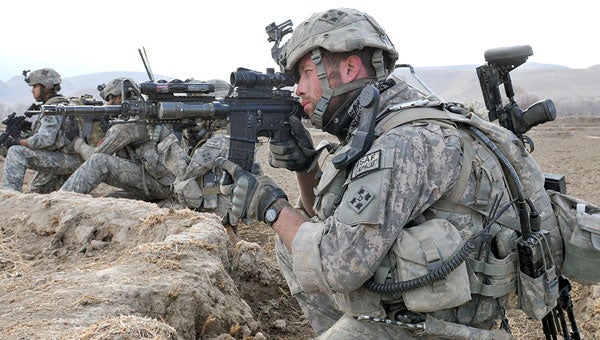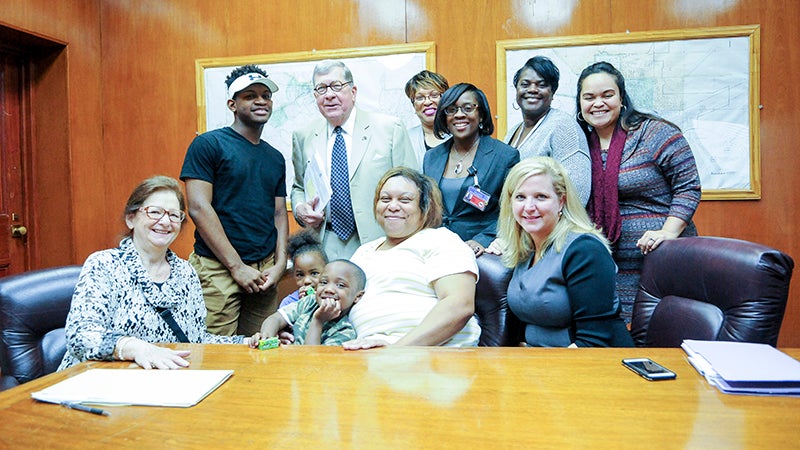A show of workforce: Military
Published 10:24 pm Wednesday, January 12, 2011
A traditional college education may not be for everyone and for those who want a hands-on educational experience outside of the classroom, a career with the U.S. armed forces may be an option.
“The Army may very well be a route to college,” said Douglas Smith, a civilian spokesperson for the U.S. Army’s Recruiting Command in Fort Knox, Ky. “We’re known for educational benefits that can be used even after serving.”
Smith said nationally the army has been doing well in recruiting, which could be due to combat operations in Iraq coming to a close and the projected withdrawal dates from Afghanistan at least on the calendar.
“Over the past several years we’ve been successful in enlistment,” Smith said. “We’ve made our goals beginning in 2006. We’ve had a strong pool of people, back-to-back, who’ve scored high on the ASVAB test or have a high school diploma. As an all-volunteer force, we’ve shown we can do well in a wartime environment.”
Smith said for the 2010 Federal fiscal year, 90 percent or better of enlistees had high school diplomas and more than 64 percent of active army scored in the top percentile of the Armed Services Vocational Aptitude Battery (ASVAB), a test measuring specific skills and abilities for the Army, Navy, Marines, Air Force and Coast Guard.
“Ninety-nine point nine percent of active Army and Army Reserve enlistees had high school diplomas,” Smith said. “In addition, almost 71 percent of Army Reserve scored high on the ASVAB. I’m pleased to say we’ve made our recruiting goals.”
Smith said with more than 150 career choices available outside of the classroom, the Army has lots of opportunities.
“It depends on what a person wants,” Smith said. “There’s skill training and a variety of occupations like—military police, medical jobs and mechanics. You’ll have the chance to travel. These jobs can translate into civilian job opportunities.”
John McCollister, U.S. Army Recruiting Battalion-Montgomery public affairs specialist, agrees.
“The Army is ‘education oriented,’” McCollister said. “A veteran is valuable to civilian employers because they look at individuals who have learned a discipline and who has focus. They want someone who has what it takes to go the distance.”
McCollister said employers such as Amazon.com, Alaska State Troopers, Amtrak, AT&T Inc., the Alabama Department of Corrections and 377 other employers, have partnered with the U.S. Army to ensure soldiers have job placement after their tour of duties are completed.
With more than 1,500 recruiting stations nationwide and 8,000 recruiters across the country, now could not be a better time to join the armed services. Smith said before interested enlistees take the next step, there are some things they should know.
“Begin by talking to a recruiter either at a recruiting station, at your school or home,” Smith said. “Then you must fill out paperwork, get a copy of your driver’s license, have a background check done and sign an enlistment contract.”
Smith added that once an oath is taken, the enlistee will wait for future placement.
“Once you take an oath of enlistment,” Smith said. “You’ll wait for your future soldier training program, which could take up to 14 months, depending on the assignment.”
Smith said the military also offers tuition assistance to public or vocational colleges, housing, medical care, child-care centers and recreation as added benefits.
Eric A. Wiggins, U.S. Navy BM-1 (service warfare/air warfare) recruiter at Navy Recruiting Station-Prattville/Selma, said many people have shown interest in the Navy in recent years.
“I believe because of the recession and job availability within the community,” Wiggins said. “People 18, or those who have been out of school for more than five years — 20- to 30-year-olds, have joined. The percentage between the two groups is about 50-50.”
McCollister said the number of recruits older than 18 have increased.
“The economy has definitely affected enlistment to an extent,” McCollister said. “During the Reagan years, the average age of enlistment was 21, now much older persons are joining.”
McCollister said young people in the South have always been patriotic.
“The Southeast has always been a place where young people have had a high desire to serve in the military,” McCollister said. “Enlistment trends have been pretty consistent and hasn’t wavered much since the beginning of the war in Iraq.”
Regardless of the branch of service, both men said the military prepares young and old alike with tangible skills they can use for life.
“The military is a chance for people to challenge themselves physically as a soldier and in their career,” Smith said. “America gives veterans lots of benefits; the military is a whole community.”



